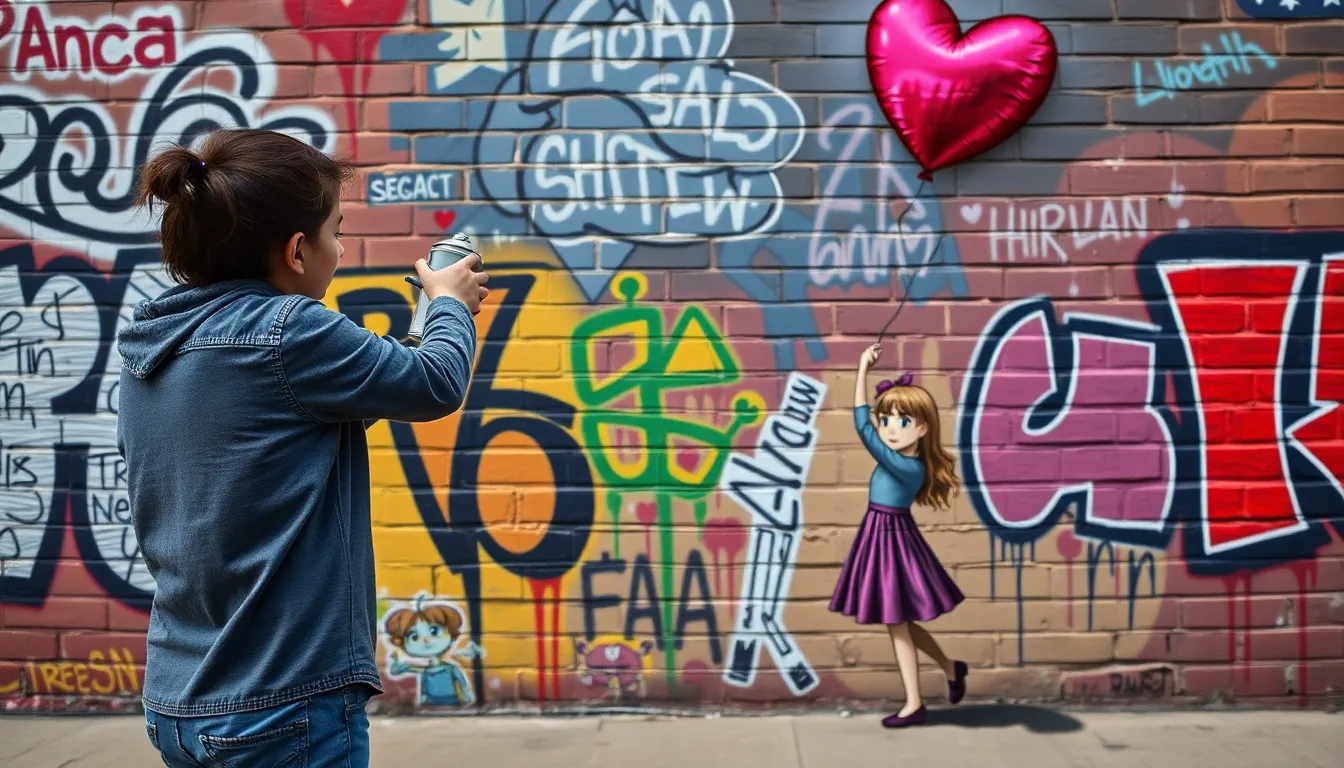Table of Contents
ToggleVisual irony is like that clever friend who always knows how to make you chuckle while scratching your head. It’s the art of presenting something that seems to contradict itself, creating a delightful twist for the viewer. Imagine a fire station burning down or a “No Swimming” sign posted right next to a pool. These moments make us laugh and ponder the absurdity of life, reminding us that not everything is as it seems.
In a world saturated with images, visual irony stands out as a powerful tool for artists, advertisers, and everyday folks alike. It challenges perceptions and sparks conversations, often leaving us with a smile and a newfound perspective. Dive into the world of visual irony examples, where humor meets insight, and discover how these clever juxtapositions can add a splash of wit to any context.
Understanding Visual Irony
Visual irony presents contradictions that elicit both humor and reflection. This concept thrives on surprising contrasts that reveal deeper truths about everyday life.
Definition of Visual Irony
Visual irony involves the juxtaposition of visuals against expectations, creating a striking contrast that engages viewers. An image or scene appears to convey one message while simultaneously suggesting the opposite. For instance, a picture of a cat lounging in a dog bed evokes humor through the unexpected conflict of roles. This element plays a significant role in art and humor, encouraging viewers to think critically about the imagery they encounter.
Importance in Art and Media
Visual irony serves as a powerful tool in art and media, enhancing creativity and communication. Artists and advertisers leverage this concept to grab attention and provoke thought. In advertisements, contrasting images can highlight product benefits or societal issues, making messages resonate more. Famous artworks often explore visual irony, inviting viewers to engage with layers of meaning. Across various media, this technique cultivates conversations, challenges norms and invites exploration of complex ideas.
Examples of Visual Irony in Art

Visual irony manifests vividly across various art forms. Artists use it to stimulate thought while creating humor through contradictions.
Classic Art Examples
Jan van Eyck’s “The Arnolfini Portrait” exemplifies visual irony through its portrayal of a seemingly simple domestic scene. The couple stands in front of a mirror, reflecting not only their figures but also the artist’s signature, cleverly linking identity and ownership. Another compelling example appears in René Magritte’s “The Treachery of Images,” which depicts a pipe accompanied by the text, “Ceci n’est pas une pipe” (This is not a pipe). This juxtaposition challenges viewers’ perceptions of reality and representation, illustrating the gap between an image and its meaning.
Contemporary Art Examples
Banksy’s street art delivers powerful visual irony, playing with social commentary. “Girl with a Balloon” captures a young girl reaching for a heart-shaped balloon, yet it suggests loss and longing. Tracy Emin’s installations often evoke irony through personal narratives that confront societal expectations and norms. In “My Bed,” Emin displays her unmade bed surrounded by personal items, inviting viewers to challenge assumptions about domesticity and vulnerability. These contemporary works activate discussions while pushing the boundaries of artistic expressions.
Visual Irony in Advertising
Visual irony frequently appears in advertising, serving as a powerful method to catch attention and convey messages. Advertisers utilize this technique to create striking contrasts that resonate with audiences.
Notable Advertising Campaigns
Several advertising campaigns exemplify visual irony’s effectiveness. In a campaign for a software company, an image showed a security guard sleeping on the job, emphasizing the irony of needing security for ineffective security software. Another popular campaign featured a fast-food restaurant with a billboard declaring, “Tastes like homemade,” while a chef in the background appeared puzzled. Such campaigns cleverly highlight contradictions, leaving lasting impressions.
Impact on Consumer Perception
Consumer perception shifts significantly with the use of visual irony. Engaging visuals often foster curiosity and provoke discussions about products. When a campaign displays an unexpected visual contradiction, it challenges assumptions and invites viewers to rethink their beliefs. This approach can enhance brand recall by creating memorable associations. Advertisers achieve a deeper connection with their audiences, resulting in increased brand loyalty and engagement.
Visual Irony in Film and Television
Visual irony thrives in film and television, captivating audiences through unexpected contrasts. Iconic moments frequently showcase this technique, enhancing storytelling.
Iconic Movie Scenes
Classic films often present visual irony to create memorable moments. In “Jurassic Park,” a tranquil scene of children laughing juxtaposes the impending terror of a T. rex attack. “American Beauty” features a stunning, serene rose against a backdrop of chaos to highlight life’s contradictions. Such scenes provoke thought while engaging viewers in deeper narratives. These visual contrasts reinforce themes of innocence against danger or beauty amid turmoil, solidifying their place in cinematic history.
TV Shows Featuring Visual Irony
Television has leveraged visual irony in compelling ways, making it an integral part of storytelling. In “The Office,” characters often find themselves in absurd situations, like Michael Scott attempting to create a motivational speech about safety while introducing chaos. “30 Rock” employs irony when a character portrays a serious news anchor amidst ridiculous circumstances, showcasing the tension between professionalism and absurdity. These examples signify how visual irony enriches comedic timing and narrative complexity in TV series. Through these instances, audiences appreciate the cleverness of juxtaposed visuals, creating a lasting impact.
Visual irony remains a powerful tool across various media forms. Its ability to juxtapose expectations with reality not only captures attention but also stimulates meaningful conversations. By highlighting life’s absurdities through clever imagery, it challenges perceptions and encourages deeper reflection. Whether in art, advertising, or film, visual irony effectively engages audiences and leaves lasting impressions. As creators continue to explore this concept, they’ll likely uncover new ways to provoke thought and inspire dialogue, ensuring visual irony’s relevance in contemporary culture.




